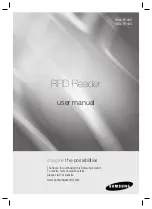
DECS-400 Digital Excitation Control System
9
Figure 1 - Dimensions,
Front view
Depth: 11.14" (283.0mm)
current (single phase), frequency, kW, Power Factor,
field voltage, and field current. The user can utilize the
DECS-400 BESTCOMS to trigger and save a record of
a voltage step response during commissioning. Once
commissioned, a logic trigger or level trigger can be
used to activate the data recorder to capture the
occurrence for review at a later time. DECS-400 alarms
can also be used to start the data recorder. When an
alarm condition occurs, an oscillographic record can
be stored. A level trigger will initiate a record to be
saved when a variable exceeds a predetermined
setting, such as when the exciter field current exceeds
a predetermined setting.
The oscillographic records are recorded in accordance
with the IEEE Standard Common Format for Transient
Data Exchange (COMTRADE) or Log file format. Basler
Electric provides BESTWAVE, a COMTRADE viewer,
that allows the user to view the oscillography records
saved by the DECS-400.
Real Time Monitoring
The DECS-400 also provides for real time monitoring
for any of the parameters available for oscillography.
The real time monitoring screen will display two param-
eters at a time, and data can be stored in a file for later
examination.
Internal Testing Provisions
Using BESTCOMS, the operator can set up and run
both frequency and step response tests to facilitate
commissioning or to demonstrate system performance.
The frequency response test has a frequency range
from 0.1 to 10 Hz, and gain/phase information is
generated in the form of a Bode plot. The DECS-400
also allows injection of test signals at various points in
the PSS/voltage regulation loop for a high level of
testing flexibility. This feature eliminates the need for an
external Dynamic System Analyzer (DSA) and associ-
ated transducers.
Communications
DECS-400 comes complete with Windows
®
based PC
software designed to make the programming and cus-
tomization of the DECS-400 easy and fast. The software
includes a PID selection program that allows the user
to select stability settings quickly and easily in a user-
friendly format. The PC software has monitoring
screens that allow the user to view all settings, meter-
ing screens for viewing all machine parameters, and
control screens for remote control of the excitation
system.
The rear-mounted RS-485 port supports Modbus™
(floating point) communications protocol. This is an
open protocol with all registers and operating instruc-
tions available in the instruction manual, to make it
simple for the user to develop custom communications
software. A rear-mounted modem is also provided to
facilitate access to DECS-400 settings and alarms from
remote locations.
Ethernet communication is another standard feature
available on the DECS-400 via an RJ-45 port. This pro-
tocol supports Modbus TCP in 10 Base T transmission
speeds. It also gives users the ability to synchronize
time via NTP and download records created from Oscil-
lography, Sequence of Events, and Trending Logs.
Depending on system and preference, Modbus com-
munications is user-configurable to work through the
default modem (RS-485) or Ethernet (RJ-45) ports via
ASCII. Updated hardware designs maintain drawout
capabilities of the DECS-400, without having to discon-
nect wires.
Password Protection
All DECS-400 parameters are viewable via the front
panel LCD display, the PC software, or via Modbus™
without the need of a password. If the user wishes to
change a setting, the proper password must be en-
tered to allow access to the parameter. Two levels of
password protection exist, one for global access to all
parameters and one for limited access to parameters
normally associated with operator control.
FEATURES/FUNCTIONS, continued





























